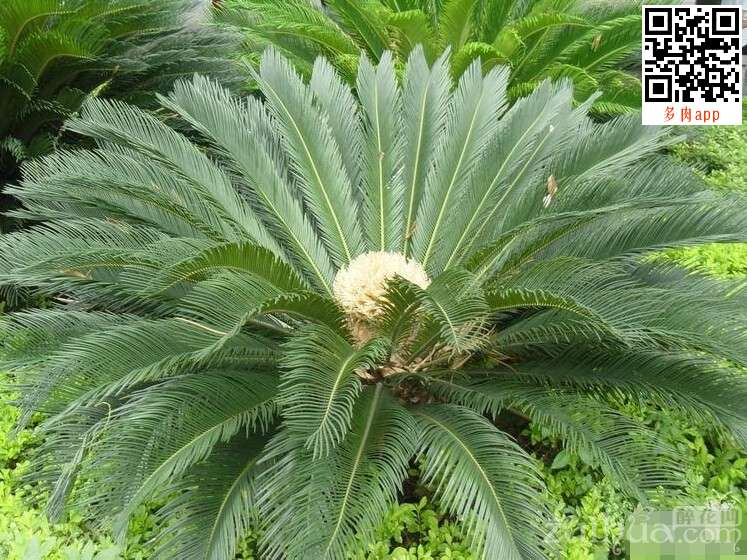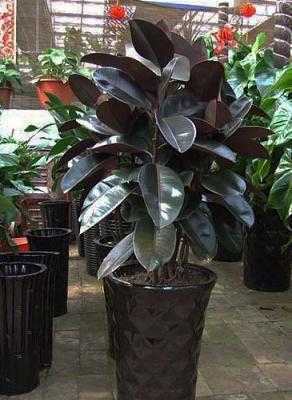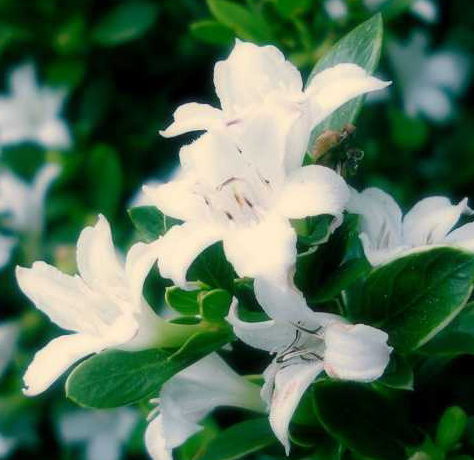How to cultivate multi-headed cycads?
Cycads are evergreen all the year round, with beautiful and strange plant types and leaves, long viewing period and extensive management, so they are deeply loved by conservation enthusiasts. Cycads can be placed outdoors or used for indoor viewing.
If one-headed cycads can be cultivated into long-headed cycads, the ornamental value will be even higher. The method is to soak the bought cycad embryos in potassium permanganate disinfectant for 15 minutes in early spring, take them out and dry naturally, and then cut off the top buds of cycads with a knife. In order to prevent stagnant water, the cutting noodles can be slightly inclined, and the injured □ can be sealed with sticky yellow mud. Then peel off the old skin of the root in order to take root, also seal the injured □ with yellow mud, and wait for the yellow mud to dry slightly before planting. The matrix can be made of coarse-grained sand sterilized by hot water. The planting depth is 1 stroke 4 with stem length. Because the injured □ heals quickly in the dark, it can be covered with an empty basin. Of course, the first watering should be fully watered, and then it should be a little dry until leaves grow. A few small sucking buds will grow on the top of the stem, and you can choose to leave or stay according to the shape.

1 Materials and methods 1.1 material tree species are fine-leaf cycads from Fujian. Cycads of different ages, bulbs and seeds of cycads were used as test materials. 1.2 method 1 topping method: cut off a section of the top of the adult cycad to form a tree stump, grow adventitious buds (small balls) at the top of the trunk the next year, and decide whether to stay or go according to the modeling needs in the third year to form a multi-headed cycad. 2 oblique planting method: the cycad trunk was planted with an inclination of about 45 °to the ground, and the next year the rhizome grew out of many small balls, which were selected and left according to the shape needs. 3 Burning method: burn the top bud of cycad with iron, and after a certain period of time, small balls will sprout from the base and carved year by year. 4 splicing method: retain the apical bud of 2 (more than 2) small cycad balls, obliquely cut off the side of the stem of about 1 big 3 with a sharp knife, then splice the incisions together, and bind the same grafting method with plastic strip, which is made by healing and affinity. 5 chiseling method: chisel the top bud with a chisel or thick iron nail, and several new buds will sprout around the wound, thus obtaining multiple cycads. 6 dry method: the trunk is sawed horizontally (or obliquely) into several segments, then split longitudinally into blocks, and the epidermis is buried (or obliquely buried) upward on the sand bed. Under appropriate conditions, the tuber will sprout one or more bud balls and be cultivated. 7 assembly method: two (or more than two) plants that match each other are planted together. 8 continuous ball method: the continuous balls produced by asexual reproduction on the old tree were dug up and planted. 9 double embryoid method: seeds produced by sexual reproduction, some of which can grow into two closely linked seedlings, naturally become multi-headed cycads. 2 the results and analysis showed that except for the split-dry method and splicing method, the survival rate of the cycads obtained by the other cultivation methods reached 100%, and the worst of the sub-dry method was only 70%. In terms of the number of buds, the number of adventitious buds produced by topping method was the most, up to 5-8 buds, followed by chiseling method, which could produce 5-8 buds per plant, and only 2 buds were produced by double-embryo method. Although the burn method only produces 3-5 buds per plant, the donor tree is only 3-5 years old, while the ball-connected method is the shortest, 1-2 years old. The diploid law needs to be cultivated by sowing. 3 Summary and discussion among the nine cultivation methods tested, although the operation methods of top cutting, oblique planting, burning and chiseling are different, their basic principles are roughly the same. they are all formed by sprouting dormant buds or producing adventitious buds by destroying the apical dominance of the plant. When the trunk is cut off by the truncation method, the apical dominance is destroyed, and at the same time, calli can be formed at the top section, which can differentiate and produce adventitious buds; oblique planting method destroys its apical dominance because of the background characteristics of plant growth, and many balls grow at the base of the trunk. The scalding and chiseling methods destroy the apical superiority and release the inhibition of the dormant buds, on the other hand, the meristem formed near the wound differentiates into adventitious buds and forms globules. It may be due to the large injury area of the topping method, the formation of more calli and the production of the most adventitious buds. The double-embryo method uses the seeds produced by sexual reproduction to cultivate multiple cycads, but this kind of seed which can grow two seedlings can not be propagated qualitatively and is completely random, so it is difficult to apply it on a large scale. In addition, the other methods can be done artificially and can be used as a way to cultivate multi-headed cycads of different shapes. In the specific application, we should pay attention to the following problems: 1. The production of multi-headed cycad should be carried out in the dormant period, when the temperature is low, Rain Water is less, the air humidity is low, the plant is rich in nutrients, and it is not easy to become infected and necrotic after cutting. Wound healing is also faster. 2. Cut wounds should be exposed to sunlight or infrared, and then sealed with wax to avoid direct contact with soil or air. 3. Cycads are fleshy dry stems and fleshy fibrous roots. avoid too much water, otherwise they will rot roots and stems, or cause leaves to grow only and leaves sparse. 4. Bonsai cycads grow well only in full sunshine, so after putting cycads indoors for a period of time, they need to accept sunshine, especially during the leaf germination season, otherwise the leaves are long and thin, and the ornamental quality is not good. 5. The cultivation of multi-headed cycad is a fine biological process, which must be carefully carved in order to cultivate high-quality products. The cultivation technology of multi-headed cycad is one of the commonly used tree species in modern landscaping. It is favored by people for its tall and straight, beautiful, evergreen and iron-bone grace. It is a symbol of longevity, health and auspiciousness, and is known as "plant panda". Among the many varieties of cycads, the fine-leaf cycad (cycasrevoluta) produced along the coast of our province has the most ornamental value. In order to meet the market demand, in recent years, the garden department has made great efforts to develop the production of cycads and cultivated a large number of cycads seedlings. However, most of the existing cultivated plants are single-headed and single-stem plants, and the cultivation of multi-headed cycad can not only improve its ornamental, but also increase economic benefits. In the past 10 years, the author has accumulated some experience in cultivating multi-headed cycads in the process of studying cycads, which is reported as follows. 1 Materials and methods 1.1 material tree species are fine-leaf cycads from Fujian. Cycads of different ages, bulbs and seeds of cycads were used as test materials. 1.2 method 1 topping method: cut off a section of the top of the adult cycad to form a tree stump, grow adventitious buds (small balls) at the top of the trunk the next year, and decide whether to stay or go according to the modeling needs in the third year to form a multi-headed cycad. 2 oblique planting method: the cycad trunk was planted with an inclination of about 45 °to the ground, and the next year the rhizome grew out of many small balls, which were selected and left according to the shape needs. 3 Burning method: burn the top bud of cycad with iron, and after a certain period of time, small balls will sprout from the base and carved year by year. 4 splicing method: retain the apical bud of 2 (more than 2) small cycad balls, obliquely cut off the side of the stem of about 1 big 3 with a sharp knife, then splice the incisions together, and bind the same grafting method with plastic strip, which is made by healing and affinity. 5 chiseling method: chisel the top bud with a chisel or thick iron nail, and several new buds will sprout around the wound, thus obtaining multiple cycads. 6 dry method: the trunk is sawed horizontally (or obliquely) into several segments, then split longitudinally into blocks, and the epidermis is buried (or obliquely buried) upward on the sand bed. Under appropriate conditions, the tuber will sprout one or more bud balls and be cultivated. 7 assembly method: two (or more than two) plants that match each other are planted together. 8 continuous ball method: the continuous balls produced by asexual reproduction on the old tree were dug up and planted. 9 double embryoid method: seeds produced by sexual reproduction, some of which can grow into two closely linked seedlings, naturally become multi-headed cycads. 2 the results and analysis showed that except for the split-dry method and splicing method, the survival rate of the cycads obtained by the other cultivation methods reached 100%, and the worst of the sub-dry method was only 70%. In terms of the number of buds, the number of adventitious buds produced by topping method was the most, up to 5-8 buds, followed by chiseling method, which could produce 5-8 buds per plant, and only 2 buds were produced by double-embryo method. Although the burn method only produces 3-5 buds per plant, the donor tree is only 3-5 years old, while the ball-connected method is the shortest, 1-2 years old. The diploid law needs to be cultivated by sowing. 3 Summary and discussion among the nine cultivation methods tested, although the operation methods of top cutting, oblique planting, burning and chiseling are different, their basic principles are roughly the same. they are all formed by sprouting dormant buds or producing adventitious buds by destroying the apical dominance of the plant. When the trunk is cut off by the truncation method, the apical dominance is destroyed, and at the same time, calli can be formed at the top section, which can differentiate and produce adventitious buds; oblique planting method destroys its apical dominance because of the background characteristics of plant growth, and many balls grow at the base of the trunk. The scalding and chiseling methods destroy the apical superiority and release the inhibition of the dormant buds, on the other hand, the meristem formed near the wound differentiates into adventitious buds and forms globules. It may be due to the large injury area of the topping method, the formation of more calli and the production of the most adventitious buds. The double-embryo method uses the seeds produced by sexual reproduction to cultivate multiple cycads, but this kind of seed which can grow two seedlings can not be propagated qualitatively and is completely random, so it is difficult to apply it on a large scale. In addition, the other methods can be done artificially and can be used as a way to cultivate multi-headed cycads of different shapes. In the specific application, we should pay attention to the following problems: 1. The production of multi-headed cycad should be carried out in the dormant period, when the temperature is low, Rain Water is less, the air humidity is low, the plant is rich in nutrients, and it is not easy to become infected and necrotic after cutting. Wound healing is also faster. 2. Cut wounds should be exposed to sunlight or infrared, and then sealed with wax to avoid direct contact with soil or air. 3. Cycads are fleshy dry stems and fleshy fibrous roots. avoid too much water, otherwise they will rot roots and stems, or cause leaves to grow only and leaves sparse. 4. Bonsai cycads grow well only in full sunshine, so after putting cycads indoors for a period of time, they need to accept sunshine, especially during the leaf germination season, otherwise the leaves are long and thin, and the ornamental quality is not good. 5. The cultivation of multi-headed cycad is a fine biological process, which must be carefully carved in order to cultivate high-quality products.
- Prev

How should potted rubber trees be maintained?
When planting rubber trees in pots, one part of rotten leaf soil, one part of garden soil and one part of river sandy soil should be used, and a small amount of base fertilizer should be added to form culture soil. It grows very fast in a hot and humid environment, producing a leaf every 5 to 10 days. During this period, adequate fertilizer and water must be ensured, and liquid fertilizer or compound fertilizer should be applied once or twice a month.
- Next

How to protect the family potted snow in June?
Family potted June snow is the first choice for many families, maintenance needs to pay attention to the following points: 1, watering. If it is not dry or irrigated, if the basin soil is moist for a long time, it will easily lead to difficulty in breathing in the roots and cause rotting roots to death. At the same time, spray water to its leaves once or twice a day to maintain air humidity. 2. Fertilization. Pay attention to diligence
Related
- Fuxing push coffee new agricultural production and marketing class: lack of small-scale processing plants
- Jujube rice field leisure farm deep ploughing Yilan for five years to create a space for organic food and play
- Nongyu Farm-A trial of organic papaya for brave women with advanced technology
- Four points for attention in the prevention and control of diseases and insect pests of edible fungi
- How to add nutrient solution to Edible Fungi
- Is there any good way to control edible fungus mites?
- Open Inoculation Technology of Edible Fungi
- Is there any clever way to use fertilizer for edible fungus in winter?
- What agents are used to kill the pathogens of edible fungi in the mushroom shed?
- Rapid drying of Edible Fungi

